- Books Name
- Iti Shree Science Book
- Publication
- Vaishnav Publication
- Course
- CBSE Class 10
- Subject
- Science
Transportation in Human beings
Transportation
- All living organisms need a few necessary components like air, water, and food for their survival.
- On a regular basis, animals ensure these elements by breathing, drinking and eating.
- The required elements are transported to their body cells and tissues by a transportation system.
- In plants, the vascular tissue is responsible for transporting the substances.
Transportation in humans
- Transportation in humans is done by the circulatory system.
- The circulatory system in humans mainly consists of blood, blood vessels and the heart.
- It is responsible for the supply of oxygen, and nutrients, and the removal of carbon dioxide and other excretory products.
- It also helps to fight infections.
Human Heart
- The muscular organ which is located near the chest slightly towards the left in the thoracic region.
- The heart is the main pumping organ of the body.
- The human heart is divided into four chambers which are involved in the transportation of oxygenated and deoxygenated blood.
- The upper two chambers are called atria whereas the lower two chambers are called as ventricles.
Blood vessels
- Blood vessels carry blood throughout the body.
- There three types of blood vessels; arteries, veins and blood capillaries.
- Arteries carry oxygenated blood and veins carry deoxygenated blood.
- Gaseous exchange takes place between blood and cells at capillaries.
Difference between Arteries and Veins

Blood Pressure
The pressure exerted by the blood when it flows through the blood vessels is called blood pressure.
- There are two different variants of blood pressure; systolic and diastolic blood pressure.
- The pressure exerted on the walls of arteries when the heart is filling with blood is called diastolic pressure. It constitutes the minimum pressure on arteries.
- The normal range of diastolic blood pressure should be 60 – 80 mm Hg.
- The pressure exerted on the walls of arteries when the heart is pumping the blood is called systolic pressure. It constitutes the maximum pressure applied to the arteries.
- The normal range of systolic blood pressure should be 90 – 120 mm Hg.
Transportation in Plants
- Transportation is a vital process in plants.
- The process involves the transportation of water and necessary nutrients to all parts of the plant for its survival.
- Food and water transportation takes place separately in plants.
- Xylem transports water and phloem transports food.
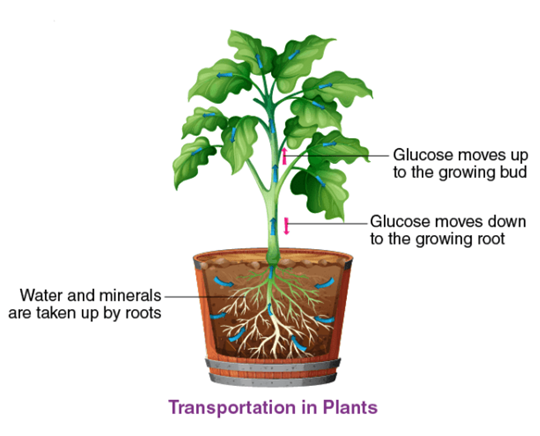
Phloem
- The phloem is responsible for translocation of nutrients and sugar like carbohydrates, produced by the leaves to areas of the plant that are metabolically active.
- Sieve tubes, companion cells, phloem fibres, and phloem parenchyma cells are the components of this tissue
- The flow of material through phloem is bidirectional.
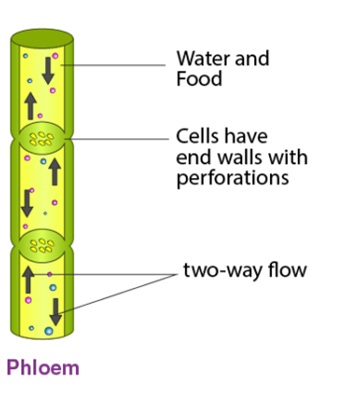
Transport of food in the plant
- Transport of food in the plant through phloem via a process such as mass flow is called as translocation.
- Photosynthates i.e. sugars and organic molecules such as amino acids, organic acids, proteins and inorganic solutes like potassium, magnesium, nitrate, calcium, sulfur and iron from source tissues (mature leaves) to the sink cells (areas of growth and storage) are transported through the phloem.
- Material like sucrose is loaded from leaves to phloem using the energy of ATP.
- Such a transfer increases the osmotic pressure causing the movement of water from nearby cells into phloem tissue and the material gets transported through the phloem.
- The same pressure is also responsible for the transfer of substances from phloem to tissues where food is required.
- Thus the bulk flow of material through phloem takes place in response to an osmotically generated pressure difference.
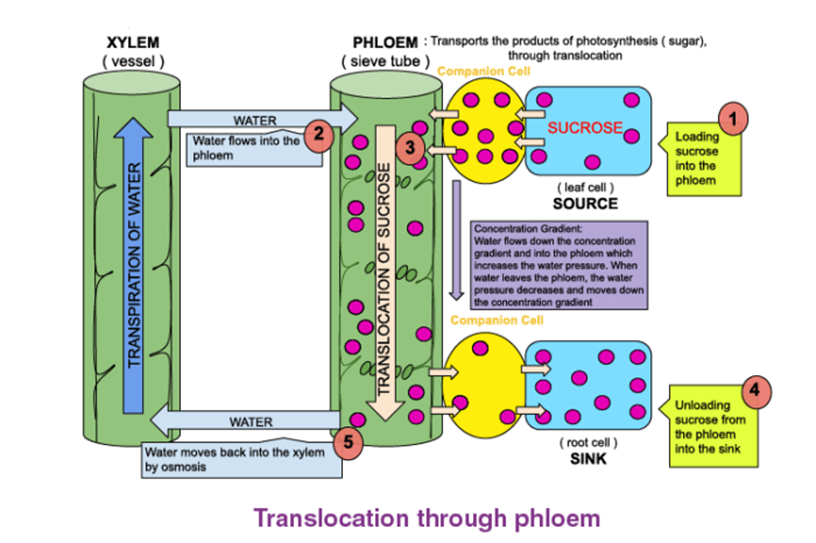
Xylem
- Xylem tissue transports water in plants from root to all other parts of the plant.
- Xylem tissue is made up tracheids, vessels, xylem fibres and xylem parenchyma.
The flow of water and minerals through xylem is always unidirectional.
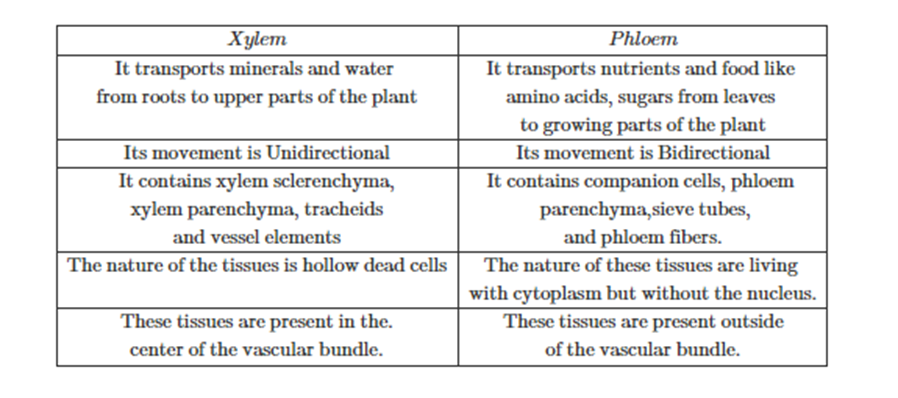
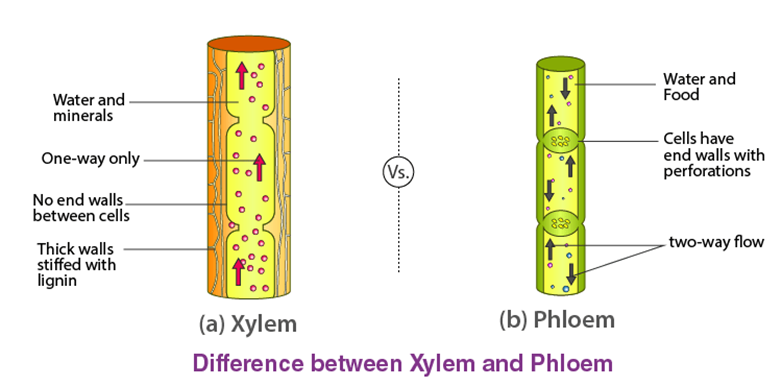
Root pressure
- Conduction of water through the xylem, from roots to upper parts of plants, is due to many forces acting together.
- One of the forces responsible for this is root pressure.
- Root pressure is osmotic pressure within the cells of a root system that causes sap to rise through a plant stem to the leaves.
- Root pressure helps in the initial transport of water up the roots.
Transport of water
Water is absorbed by the roots and is transported by xylem to the upper parts of the plant.
Imbibition, osmosis, root pressure and transpiration are the forces that contribute towards the upward movement of water, even in the tallest plants.
- Imbibition is a process in which water is absorbed by the solids. E.g. seeds take up water when soaked.
- Osmosis is a process where water moves from the area of its lower concentration to the area of its higher concentration.
- At the roots, the cells take up ions by an active process and this results in the difference of concentration of these ions.
- It leads to movement of water, in the root cells, by osmosis.
- This creates a continuous column of water that gets pushed upwards. This is root pressure.
- Transpiration contributes to the upward movement of water by creating a staw effect.
- It pulls the water column upwards as there is a continuous loss of water from leaves.
- All these forces act together for water transport through the xylem.

 Vaishnav Publication
Vaishnav Publication
